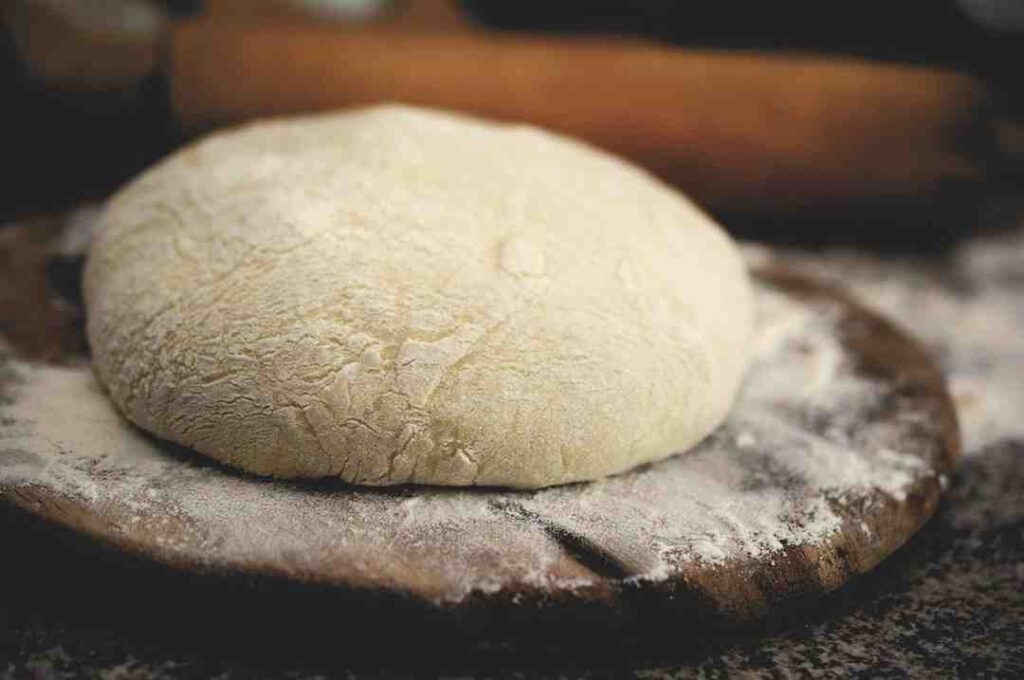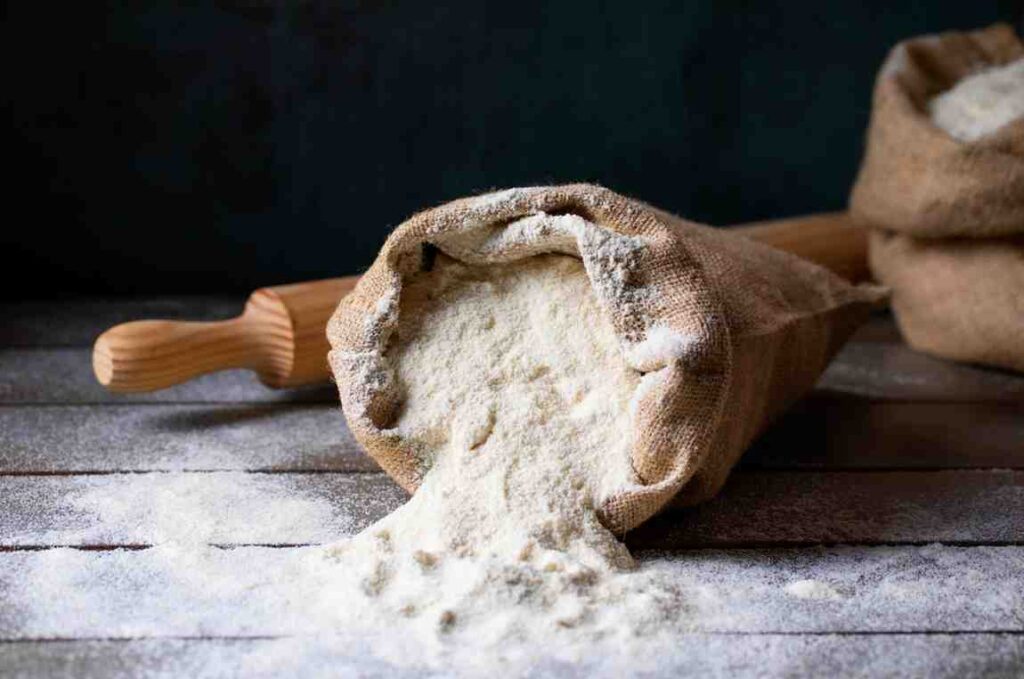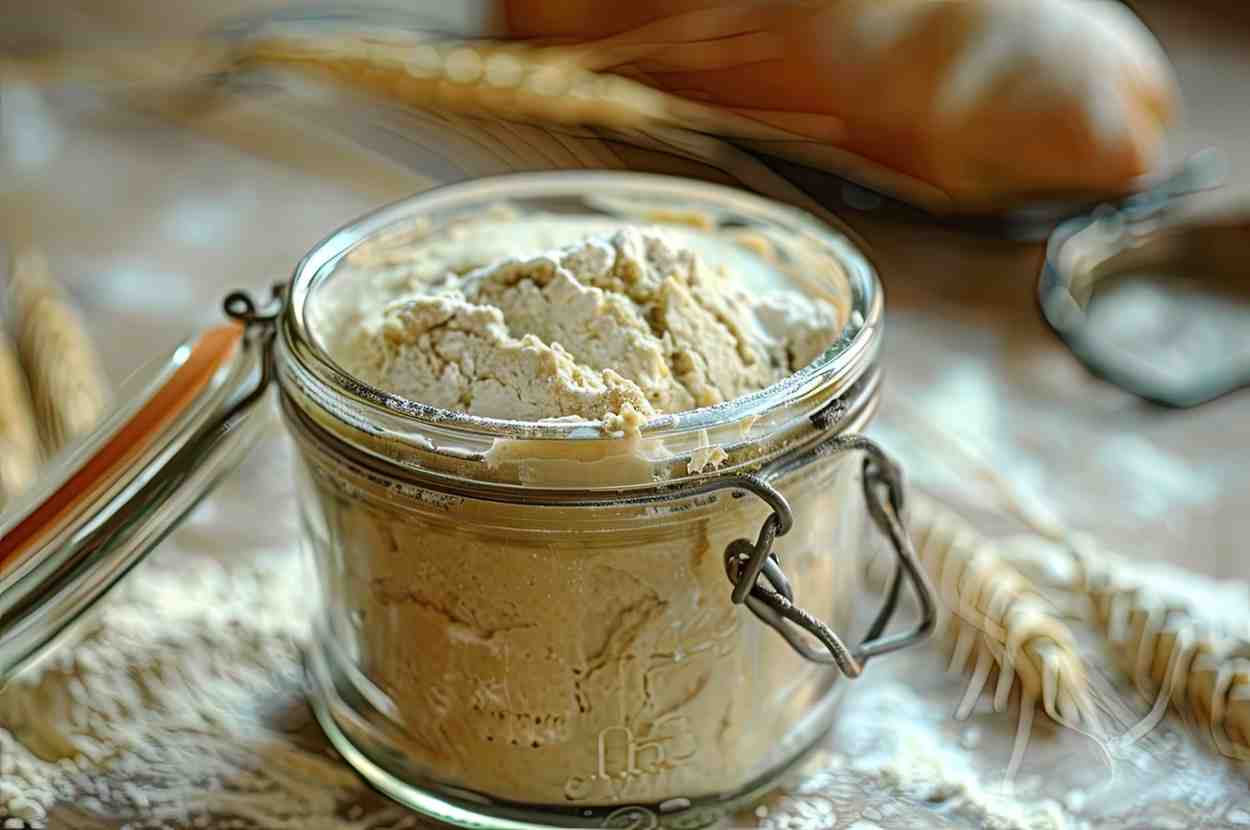A natural yeast starter is a living mixture of flour and water, teeming with wild yeasts and lactic acid bacteria (LAB). Over time, these microorganisms ferment the dough, which helps to leaven bread and add flavor. Unlike commercial yeast, which works quickly and predictably, a natural yeast starter takes more time but produces richer, more complex flavors.
What is a Natural Yeast Starter?
- Key Elements of a Natural Starter:
- Wild yeasts, like Saccharomyces cerevisiae, are naturally present in flour and the environment.
- Lactic acid bacteria, such as Lactobacillus sanfranciscensis, aid in fermentation, flavor, and preservation.
- The slow fermentation process develops a complex, tangy taste.
By using natural yeasts, bread gains a unique character and texture. Unlike the uniform rise of bread with commercial yeast, the slow fermentation allows more time for gluten development, resulting in a chewy crust and a more open crumb.
Importance of Lactic Acid Bacteria (LAB) in Fermentation
Lactic acid bacteria play an essential role in maintaining a healthy starter. Their primary function is to lower the pH of the dough through acid production, which preserves the dough and gives sourdough its signature taste. The presence of LAB also contributes to bread’s shelf life by inhibiting harmful bacteria and mold.
- LAB Benefits:
- LAB produces lactic acid, which gives bread a smooth, mild flavor.
- They also produce acetic acid, adding a sharper, sour note.
- LAB help to break down phytic acid in whole grains, enhancing the bread’s nutritional content.
LAB works together with yeast to create a balanced fermentation process, enhancing both flavor and the bread’s texture.

The Role of Lactic Acid Bacteria in Yeast Starters
Lactic acid bacteria, particularly Lactobacillus species, are the unsung heroes of the fermentation process. These bacteria not only help create the tangy flavor associated with sourdough but also strengthen the dough structure by lowering the pH.
- Types of Lactic Acid Bacteria:
- Lactobacillus sanfranciscensis: Common in sourdough, this species is essential for its flavor.
- Lactobacillus brevis: Adds to both the fermentation and preservation process.
LAB helps break down complex carbohydrates, making minerals and nutrients more available. The acids they produce aid in the gluten formation, which is crucial for a well-structured dough.
How Lactic Acid Bacteria and Yeast Work Together
The relationship between yeast and LAB in a natural starter is symbiotic. While yeast ferments the sugars in the dough to produce carbon dioxide (which makes the dough rise), LAB breaks down more complex carbohydrates into simple sugars, which yeast can further ferment.
- Symbiotic Processes:
- Yeasts produce carbon dioxide for leavening.
- LAB produces acids that lower the pH and inhibit unwanted microbes.
- The acids also help enhance the gluten network, giving the bread better structure and texture.
Maintaining Your Natural Yeast Starter
Maintaining a natural yeast starter requires regular feedings to keep both the yeasts and LAB active. Feeding your starter involves discarding a portion of it and replacing it with fresh flour and water, providing the microorganisms with a new food source.
Step-by-Step Guide to Feeding a Yeast Starter
- Feeding Frequency: Feed your starter once every 24-48 hours when stored at room temperature. If refrigerated, you can feed it once a week.
- Flour Choice: Whole grain flours like rye and whole wheat are ideal for feeding as they contain more nutrients.
- Water: Always use non-chlorinated water as chlorine can harm the beneficial microbes in your starter.
If your starter develops a layer of liquid on top (hooch) or has a strong smell, it’s a sign that it needs feeding.
Feeding Techniques for Different Environments
The frequency and method of feeding can vary depending on environmental factors. Warm climates require more frequent feedings, while cooler environments can slow down the activity of your starter, requiring less frequent maintenance.
- In Warm Climates:
- Feed your starter more often, sometimes twice a day.
- Use colder water to slow down fermentation.
- In Cooler Climates:
- Less frequent feedings are needed.
- Keep the starter at room temperature or feed it less often when refrigerated.
Signs Your Starter Needs Feeding
- Hooch Formation: A layer of liquid forms on top.
- Strong Odor: If the starter smells particularly sour or alcohol-like, it’s overdue for a feed.
- Decreased Activity: If your starter is not bubbling as much as usual, it may need more frequent feeding.
Factors That Influence Yeast and LAB Activity

Several factors impact the activity of both yeasts and LAB in your starter. Understanding how these factors affect fermentation will help you maintain a healthy and active starter.
Impact of Temperature, Hydration, and Flour Types
- Temperature: Warmer temperatures speed up fermentation, while cooler temperatures slow it down. Keeping your starter at a consistent temperature is crucial for predictable results.
- Hydration: The water-to-flour ratio (hydration level) affects fermentation speed and dough consistency. A higher hydration level encourages more activity but can make the dough stickier and harder to work with.
- Flour Type: Whole grain flours contain more nutrients and promote a more diverse microbial ecosystem. However, white flour is easier to manage and results in a more consistent rise.
Whole Grain vs. White Flour
- Whole Grain Flour: Provides more nutrients, resulting in a more vigorous fermentation.
- White Flour: Easier to work with but provides fewer nutrients for microbial activity.
By selecting the right flour and feeding your starter consistently, you can maintain an active and healthy microbial balance.
Common Challenges and Troubleshooting
Maintaining a natural yeast starter can present a few challenges, especially for new bakers. Issues like over-fermentation, slow fermentation, or improper pH balance can arise, impacting the starter’s health and performance. Understanding these common problems and their solutions can help you keep your starter in peak condition.
Over-fermentation
Over-fermentation happens when the yeast and bacteria consume all the available nutrients, causing the starter to become overly sour or produce excess liquid (hooch). It can lead to a weakened structure and an unpleasant smell.
- Prevention Tips:
- Feed the starter more frequently.
- Use cooler water to slow down fermentation.
- Keep it at a lower temperature.
Slow or Stalled Fermentation
This occurs when the starter isn’t producing enough carbon dioxide, resulting in a flat dough. It may be due to low temperatures, inadequate feeding, or a dormant starter.
- Fixes for Slow Fermentation:
- Increase the feeding frequency.
- Ensure your starter is kept in a warm environment (70-75°F).
- Use whole grain flours to boost activity.
Understanding pH Balance
Lactic acid bacteria (LAB) help maintain a healthy pH in the starter. A balanced pH prevents harmful pathogens from growing and enhances yeast activity. If the pH is too high or low, it can impact the starter’s performance.
- Maintaining pH Balance:
- Regular feedings will keep pH levels stable.
- Use a pH meter to monitor acidity.
- Consider using a flour with a higher mineral content, such as rye.
Best Practices for Long-Term Storage
Storing your natural yeast starter properly is crucial if you won’t be baking for a while. There are two main methods: refrigeration and freezing. Each method has its own best practices to ensure the starter stays viable over time.
- Refrigeration:
- Store the starter in a loosely covered jar to allow gas escape.
- Feed it once a week with fresh flour and water.
- Bring the starter to room temperature and feed it a few times before using.
- Freezing:
- Divide the starter into small portions and freeze in airtight containers.
- Thaw the starter in the refrigerator and feed it multiple times to reactivate.
Tips for Reviving a Stored Starter
If your stored starter has become inactive or sluggish, try these steps:
- Discard most of the old starter, leaving only a tablespoon.
- Feed it with equal parts flour and water twice daily.
- Keep it at a warm temperature until it becomes bubbly and active again.
The Science Behind LAB and Yeast in Fermentation
Understanding the science behind yeast and LAB interactions in natural starters is crucial for maintaining their health and performance. Both yeast and LAB play distinct roles in the fermentation process.
Microbial Fermentation Process in Starters
During fermentation, yeasts break down sugars into carbon dioxide and ethanol, which help leaven the dough. LAB, on the other hand, convert sugars into lactic and acetic acids, lowering the pH and adding complexity to the bread’s flavor.
- Key Processes:
- Yeasts produce carbon dioxide for leavening.
- LAB produce acids that inhibit harmful microbes.
- Together, they create the ideal environment for flavor and texture development.
Role of Temperature and Hydration
Temperature and hydration significantly impact fermentation speed and flavor profile.
- Temperature Effects:
- Higher temperatures accelerate fermentation.
- Lower temperatures slow down activity but enhance flavor.
- Hydration Effects:
- Higher hydration levels produce a more open crumb structure.
- Lower hydration results in a denser, more structured dough.
Gluten Strength and Texture Development
Lactic acid bacteria contribute to the gluten network by producing acids that strengthen the dough’s structure. This improved structure leads to a chewier texture and better volume in baked bread(
Tips and Notes for Maintaining a Yeast Starter
| Tip | Note |
|---|---|
| Feed regularly based on environmental conditions | In warmer climates, feed more frequently; cooler climates allow for less frequent feedings. |
| Monitor temperature and hydration levels | Higher temperatures speed up fermentation while higher hydration leads to a lighter texture. |
| Use whole grain flours to enhance microbial diversity | Whole grain flours like rye and whole wheat contain more nutrients, supporting microbial growth. |

